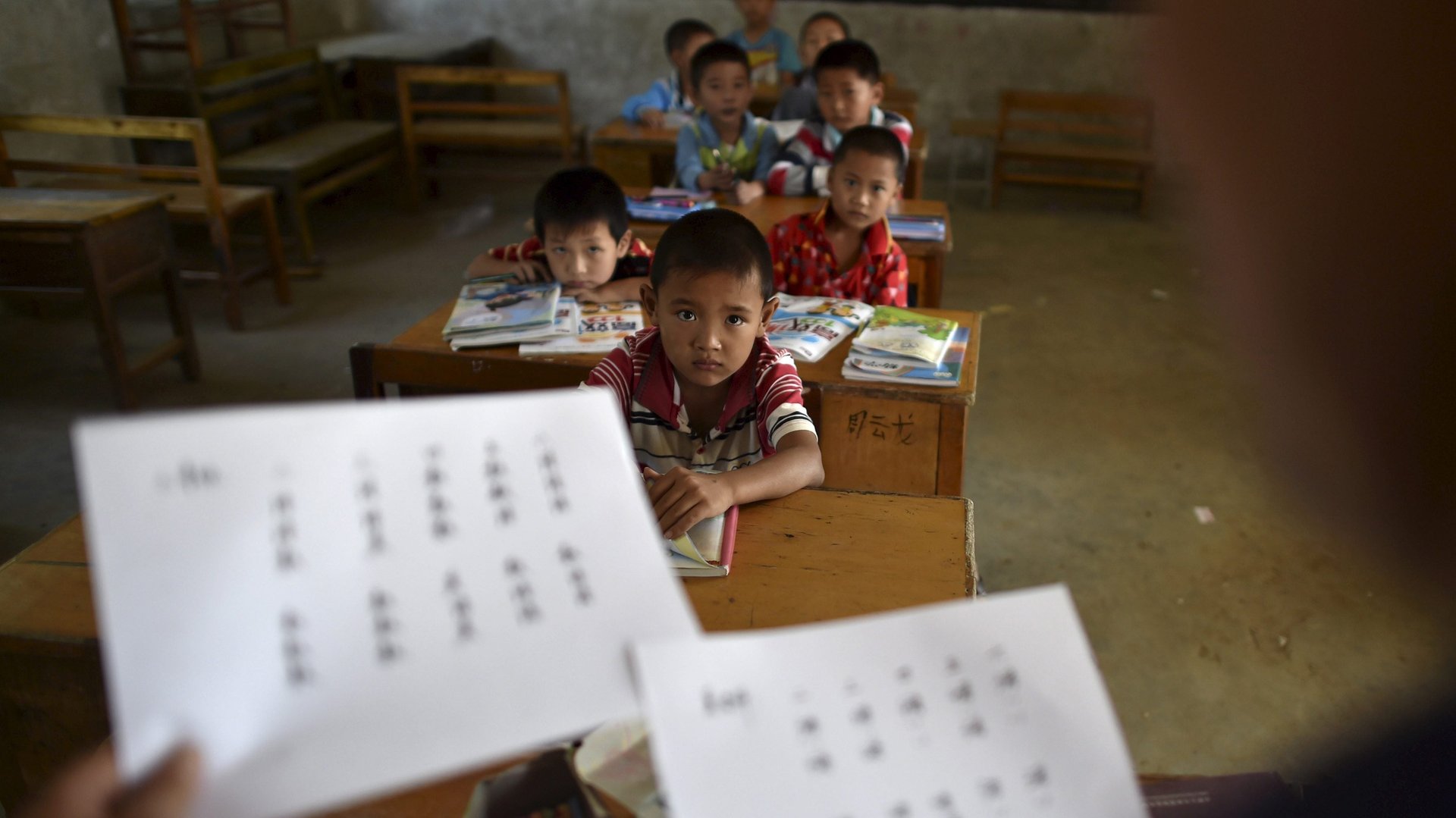China is rewriting textbooks so its “eight-year war of resistance” against Japan is now six years longer
On July 7, 1937, the Imperial Japanese Army exchanged fire with startled Chinese troops near a bridge outside Beijing, after a Japanese soldier was reported missing in the vicinity. The battle, known as the Marco Polo Bridge incident, is widely viewed as the outbreak of the Second Sino-Japanese War, which ended eight years later when Japan surrendered.


On July 7, 1937, the Imperial Japanese Army exchanged fire with startled Chinese troops near a bridge outside Beijing, after a Japanese soldier was reported missing in the vicinity. The battle, known as the Marco Polo Bridge incident, is widely viewed as the outbreak of the Second Sino-Japanese War, which ended eight years later when Japan surrendered.
China’s state-run education system traditionally marked the incident (also known as the Lugou Bridge incident) as the start of the War of Resistance Against Japanese Aggression, as the war is known in China. The term “eight-year war of resistance” was something that is drilled into the head of every student in China—until Beijing decided recently that the war was actually six years longer than they had originally taught.
On Jan. 3, the Chinese education ministry issued a notice to its regional offices that every single mention of the “eight-year war of resistance” must be replaced by the “14-year war of resistance” in official textbooks used by school kids from six to 15 years old, starting from the new semester in February. The notice first circulated on the internet and was confirmed on Jan. 10 by Beijing News (link in Chinese).
Officials with the ministry told the newspaper that the adoption of the phrase “14-year war of resistance” was first raised by the State Council, China’s cabinet, back in October. The ministry began to update official textbooks two months ago and has already completed the process, but it didn’t provide a reason why.
So if the war was 14 years long, what was the beginning of it?
On September 18, 1931, the Japanese troops staged a bombing of their own railway in Mukden, now known as the northeastern city of Shenyang. The explosion was so small that a train even managed to pass through the damaged section soon afterwards. But the incident was used as a pretext for Japan to occupy Manchuria, today’s northeastern Heilongjiang, Jilin, and Liaoning provinces, where Japan established a puppet state called Manchukuo in 1932.
The 1931 Mukden incident (aka the 9.18 incident) did mark the first step of the Japanese invasion of China, but there was essentially no resistance from either the ruling Nationalist Party (the Kuomintang) nor the rebellious Communist Party. As the two parties had been engaged in a bloody civil war since 1930, the Nationalist government followed a policy of non-resistance, and even signed a ceasefire with the Japanese army in 1933 by allowing them to control more territory. At the end of 1936, the Nationalists and the Communists finally agreed to a tactical alliance to fight against Japan.
When Japan’s new high-school history books in 2015 toned down or ignored the country’s aggression during World War II, including the Nanjing Massacre, Chinese state media was quick to cry foul. But as the Wall Street Journal noted at the time, Beijing has also been whitewashing its own history in official textbooks.
According to the Communist Party’s narrative, it is largely responsible for victory over Japan, downplaying the Nationalists’ heavy contribution. But one account by China historian Rana Mitter, for example, says that while the Nationalists had to take on a highly trained, well-equipped Japanese army in open battle, the Communists barely engaged the Japanese except in scattered guerrilla battles.
Chinese scholars and state media have cited (link in Chinese) the Northeast Anti-Japanese United Army, a small guerrilla force that included many Communist Party members, as evidence that the party had begun to resist the Japanese in Manchuria as early as 1931. In fact, the party’s main military force was based in southeastern China during that period, and later retreated through western China to the northwest in an epic journey known as the Long March, facing no direct contact against the Japanese army en route.